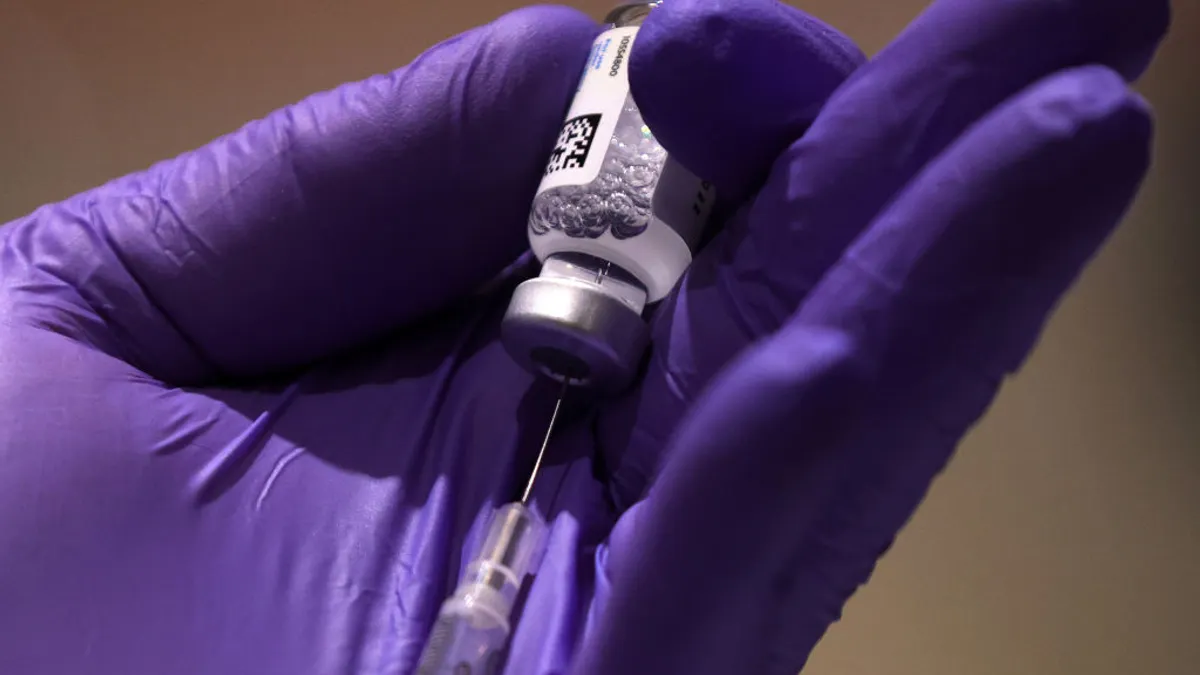Not much has changed since the first antidepressants hit the market in the 1950s, according to Sage Therapeutics chief business officer Chris Benecchi.
"In the grand scheme of things, depression has largely been treated the same way for the better part of the last 70 years when the first antidepressant was commercialized," Benecchi said. "Patients are really counting on therapies to ultimately deliver more."
There are drawbacks to current medications, including delayed onset, weight gain and other stigmatizing issues that keep patients from receiving the treatment they need, Benecchi said.
Sage, along with partner Biogen, is approaching a potential approval of the duo’s depression medication zuranolone later this year as an oral treatment for both postpartum depression (PPD) and major depressive disorder (MDD). It would be the company's second marketed product behind Zulresso, which was the first therapy approved specifically for postpartum depression. Both are neuroactive steroids — a departure from the SSRIs, like Zoloft and Prozac, that have dominated the market for decades. And another important difference is that zuranolone can potentially treat these disorders episodically, rather than chronically.
We spoke to Benecchi about how the company is approaching that drug launch, the changes it brings to an organization like Sage and how this unique space in the life sciences is changing.
This interview has been edited for brevity and style.
PHARMAVOICE: What lessons did Sage take from its launch of Zulresso in 2019 that you plan to apply to this one? Has the pandemic changed things since then?
CHRIS BENECCHI: We're proud of the impact we've had on moms with the launch and commercialization of Zulresso. But as you mentioned, there have been a number of learnings we've gleaned from that experience. It's given us the ability to get out and make strong connections with a number of prescribers and, in particular, key opinion leaders who are the clinicians on the forefront shaping the thought of how postpartum depression can and should be treated. They're the ones actively reaching and engaging with patients. Those relationships are particularly important on a number of levels.
"Here's an opportunity for the first time to restore patients back to wellbeing without taking a therapy in perpetuity."

Chris Bennecchi
Chief business officer, Sage Therapeutics
I think we've also learned a lot about referral patterns in postpartum depression, and that in terms of how it's treated, there's an important place that we have to focus on with OB-GYNs, with psychiatrists and in particular reproductive psychiatrists and primary care physicians. It's important to understand the implications that pediatricians have in helping diagnose moms and getting moms to care.
We've also (garnered) important insights talking about unmet need with payers to give us a strong foundation for broadening the conversation around not just postpartum depression but major depression disorder and aligning with that unmet need.
Before you came to Sage, a late-stage study of zuranolone failed to meet its primary endpoint. How has the company moved past that to now being on the cusp of approval?
What I can talk about here, and what I think is most important, is what we've learned from the landscape and our studies more broadly. We have data now in more than 3,500 patients demonstrating the versatility of zuranolone in (major depressive disorder) MDD and PDD. What we've demonstrated is that it can be used as a monotherapy, as an adjunctive therapy, and that it can be used episodically, which is truly groundbreaking. When you think about the way depression has been treated historically, patients are chronically on therapy. This medication works very rapidly after just two doses or day three, effectively giving mom the opportunity to come in and alleviate the need for medication and achieve symptom relief and resolution without the stigmatizing side effects that are so often associated with this medicine.
What are the challenges around changing the depression treatment paradigm?
Over the course of time, what we've seen is a steady build in terms of physician comprehension of not only the mechanism of action, but what the mechanism means. Scientific exchange has been really valuable. There's no better testimonial to the impact that it can have than the feedback we get from our investigators who have many patients' worth of experience in the real world environment, and they've seen the impact that this can have. So in terms of a paradigm shift, getting out at the time of approval and educating physicians and giving them the experience is going to play an important role in our success.
What's missing in the depression treatment landscape?
We've learned a lot about depression over the last 30 to 35 years and how patients present episodically. Historically, you take medications that are for chronic use, put a patient on that medication and essentially blanket coverage over a given year. You ask patients to power through stigmatizing side effects like sexual dysfunction and weight gain, which oftentimes derail a patient from achieving the efficacy. Here's an opportunity for the first time to restore patients back to wellbeing without taking a therapy in perpetuity.
How does Sage approach the payer part of launching a new drug into this area?
The payer environment can be particularly challenging. With respect to how we're thinking about it here at Sage, we've leaned into our engagements with payers around proactive value-based agreements, which enables us to not only present the data and align our data with unmet need, but show our willingness to collaborate and partner with payers. Making sure that burdensome prior authorizations and step edits are not in place is a critical component of our strategy.
Typically at this point what you hear from payers is, 'It's interesting that you're presenting this information, but come back to us when you have a label.' What we're actually hearing from payers, though, is energy and enthusiasm for not only the discussion around unmet need and what the product brings, but in theory what it is we can do from a contracting perspective to make it available as quickly as possible once approved.





















